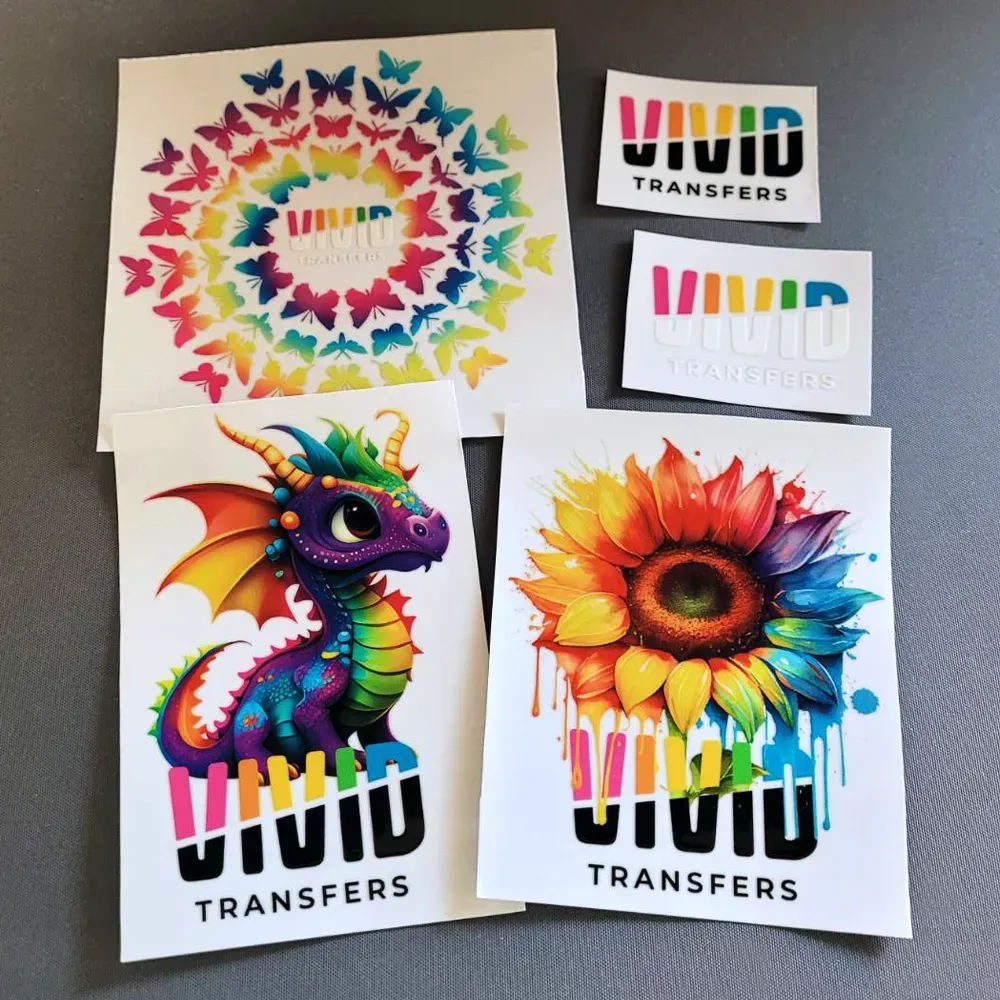UV DTF Transfers are revolutionizing the printing industry by merging cutting-edge technology with high-quality outputs. This innovative method utilizes UV printing technology to achieve stunning direct-to-film prints that not only enhance aesthetics but also present significant advantages over conventional techniques. With a focus on efficiency and environmental sustainability, UV DTF is paving the way for environmentally friendly printing solutions that resonate with today’s eco-conscious consumers. As businesses strive to keep pace with printing industry trends, adopting UV DTF transfers positions them at the forefront of a demanding market that values speed and quality. This post dives deeper into the reasons why UV DTF transfers are becoming a preferred choice for businesses looking to enhance their printing capabilities.
Also known as ultraviolet direct-to-film printing, UV DTF Transfers represent a significant shift in the landscape of printing technologies. By leveraging advanced ultraviolet light curing, this method creates vibrant and durable prints suitable for a variety of materials, catering to the diverse needs of modern consumers. The approach embodies the latest printing industry trends, emphasizing the importance of quick turnaround times alongside superior print quality. In an era where eco-friendly practices are paramount, using UV DTF transfers offers a sustainable alternative to traditional printing methods. This article explores the transformative aspects of DTF technology and its impact on businesses aiming to elevate their printing processes.
The Rise of UV DTF Transfers in Printing Technology
The printing industry is undergoing a significant transformation, with UV DTF (Direct-to-Film) transfers leading the way. This technology is rapidly gaining traction because it combines high efficiency with remarkable versatility. Unlike traditional methods such as screen printing, UV DTF utilizes ultraviolet light to cure prints instantly, allowing businesses to fulfill custom orders in record time. As manufacturers seek competitive advantages, adopting UV DTF is crucial for meeting the increasing demand for innovative printing solutions.
Furthermore, the growing adoption of UV DTF transfers can be attributed to the enhanced operational capabilities they offer. With the ability to print on a variety of substrates—from textiles to metals—this printing technology is democratizing access to custom printing options. This trend not only empowers small businesses to flourish but also helps larger companies adapt to shifting market dynamics while maintaining their commitment to quality and efficiency.
Frequently Asked Questions
What are UV DTF transfers and how do they work?
UV DTF (Direct-to-Film) transfers utilize ultraviolet light to cure ink as it is printed onto various substrates. This unique UV printing technology allows for vibrant, high-quality transfers on materials ranging from textiles to metals, providing an innovative solution for modern printing needs.
Why are UV DTF transfers gaining popularity in the printing industry?
The popularity of UV DTF transfers stems from their ability to produce superior print quality with vibrant colors and intricate details, while also being cost-effective and capable of fast turnaround times. As manufacturers adapt to meet consumer demands for custom orders, UV DTF technology stands out as a competitive advantage.
How does UV DTF printing contribute to environmentally friendly practices?
UV DTF printing is more environmentally friendly than traditional methods because it uses UV inks that contain fewer toxic solvents, reducing harmful emissions. This alignment with sustainability trends makes UV DTF transfers appealing to businesses looking to enhance their ecological responsibility.
What materials can UV DTF transfers be printed on?
One of the key advantages of UV DTF transfers is their versatility; they can print on a variety of surfaces without extensive pre-treatment. This includes challenging materials like metals and non-absorbent surfaces, opening up new opportunities for creative applications in diverse industries.
What technological advancements have improved UV DTF printing?
Recent technological advancements in UV DTF printing include improved printer designs and ink formulations. Enhanced print head technology increases speed and reduces maintenance costs, enabling small businesses to maximize productivity while delivering exquisite high-quality prints.
How do UV DTF transfers compare to traditional printing methods?
UV DTF transfers outperform traditional printing methods like screen printing in terms of print quality, durability, and versatility. UV DTF prints are known for their resistance to fading and scratching, ensuring long-lasting results that maintain their appeal over time, making them a preferred choice in the printing industry.
| Key Point | Description |
|---|---|
| Rapid Market Adoption | UV DTF technology is quickly embraced by manufacturers and small businesses for its cost-effectiveness and quick turnaround, allowing for customer satisfaction. |
| Superior Print Quality | UV DTF transfers produce vibrant, detailed, and durable prints that resist fading and scratching, outperforming traditional screen printing. |
| Environmentally Friendly Practices | The use of UV inks with fewer toxic solvents supports sustainability, enhancing a brand’s ecological appeal. |
| Versatility Across Various Materials | Capable of printing on diverse surfaces without treatment, UV DTF expands creative and product opportunities. |
| Continuous Technological Advancements | Innovations in printer technology enhance efficiency, reduce maintenance, and make UV DTF accessible to small businesses. |
Summary
UV DTF Transfers are revolutionizing the printing industry by combining advanced print technology with eco-friendly practices and versatile applications. These transfers not only offer vibrant and durable results but also align with modern environmental standards, making them a preferred choice for businesses looking to meet customer demands. As the adoption of UV DTF technology continues to rise, it signals a significant shift towards innovative printing solutions that cater to a dynamic market, setting new benchmarks for quality and sustainability in print production.



